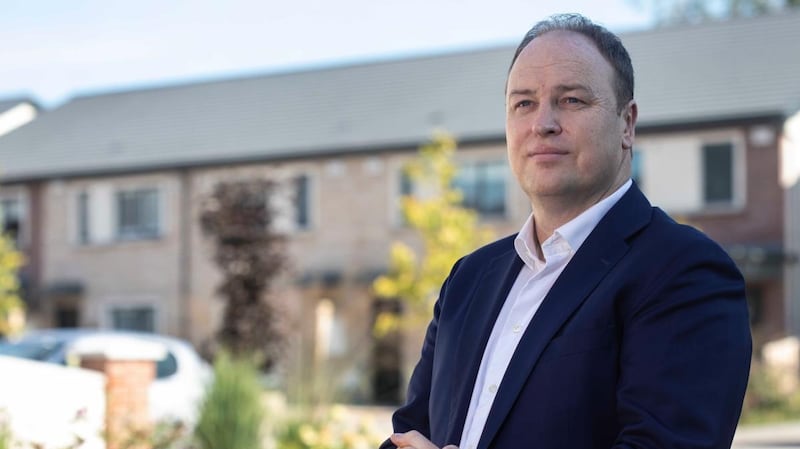The head of one of Ireland’s largest house builders says it could cost up to €70,000 to retrofit a second-hand home up to an A-rated standard that is required for new builds.
In an interview with Inside Business, a podcast from The Irish Times, Stephen Garvey, chief executive of Glenveagh Properties, said this was based on an exercise the company undertook to identify the costs of retrofitting an older home to bring it up to the standard required for new units that his company is constructing.
“You change your windows, you do your insulation, your insulation in the floor, your heat pump and plumbing system. And by the time you added up all the costs we found that this would cost €70,000 for what we can produce on our new products to get it up to the same standard.
“To retrofit a second-hand house is extremely expensive if you’re to bring it up to the same standard. Ultimately, what we’ll have to accept is that we’re not going to get them up there.”
Plans to cut the State’s greenhouse gas emissions by insulating 500,000 homes by 2030 will cost €28 billion, or €56,000 per family home, according to official figures.
The Department of the Environment has calculated that the cost of retrofitting a house to B2 standard (including the installation of a highly-efficient heat pump) would cost €14,000-€66,000, depending on the current energy rating of the house.

Mr Garvey believes consumers will “be happy to put their hands in their pocket for €15,000 to €20,000 but I don’t think they’re going to put their hands in the pocket for €60,000 to €70,000”, he said.
“I’ve heard quotes out there with some people saying it’s going to cost €35,000 to €50,000 but I think if you are to do it properly it’s going to be somewhere between €60,000 and €70,000. Then you have to ask the question ‘Is this viable to retrofit?’ because retrofitting a second-hand house will not be as good as a new quality product today.”
Labour shortages
He said cited labour shortages in the construction sector as a key factor both in terms of cost and the number of houses that it will be possible to retrofit.
Mr Garvey suggested there could be some “easy wins” in terms of climate-friendly initiatives, such as installing chargers in new homes for electric cars.
“There’s an opportunity that the electric charge for that car is going to come directly off your house. There’s a way that we could use it [climate change] to our benefit.”
In August, Glenveagh said it had “sold, signed, or reserved the 1,150 homes that we expect to deliver this year with a further 300 homes already reserved for next year”. It has set a target of building 3,000 housing units a year by 2024. He expects about 20,000 units to have been built in the Republic this year, some way off the 35,000-a-year target set out by many property commentators.















